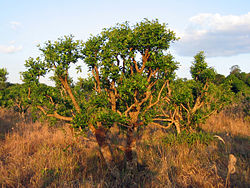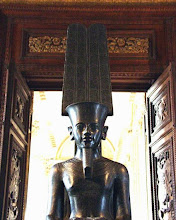Mate Part 2
Part 2 of the mate. In part one the info was about the ritual itself mainly. This part is about the plant and medical properties. Again from Wikipedia. I promise to make part 3 "home made"!
Yerba mate (Spanish) or erva mate (Portuguese) (Ilex paraguariensis) is a species of holly (family Aquifoliaceae) native to subtropical South America in Argentina, southern Paraguay, western Uruguay and southern Brazil.
The infusion called mate is prepared by steeping the dry leaves (and twigs) in hot water rather than boiling water like black tea or coffee. It is slightly less potent than coffee and much gentler on the stomach. Drinking mate with friends from a shared hollow gourd (also called a mate in Spanish, or cabaça or cuia in Portuguese) with a metal straw (a bombilla in Spanish, bomba or canudo in Portuguese) is an extremely common social practice in Argentina, Uruguay, Paraguay, eastern Chile and southern Bolivia and Brazil.
Its use has also been introduced into Lebanon and Syria, particularly among the Alawi, Druze and Ismaili minorities. It's a very popular social drink in Salamiyah, Syria.
The flavor of brewed yerba mate is strongly vegetal, herbal, and grassy, reminiscent of some varieties of green tea. Many consider the flavor to be very agreeable, however, it is generally bitter if steeped in boiling water, so is made using hot but not boiling water. Unlike most teas, it does not become bitter and astringent when steeped for extended periods, and the leaves may be infused several times. Additionally, one can purchase flavored mate in many varieties.
In Brazil, a toasted version of mate, known as chá mate or "mate tea", is sold in teabag and loose form, and served, sweetened, in specialized shops, either hot or iced with fruit juice or milk. An iced, sweetened version of toasted mate is sold as an uncarbonated soft drink, with or without fruit flavoring. The toasted variety of mate has less of a bitter flavor and more of a spicy fragrance. It is more popular in the coastal cities of Brazil, as opposed to the far southern states where it is consumed in the traditional way (green, drunk with a silver straw from a shared gourd).
Similarly a form of mate is sold in Argentina, Uruguay and Paraguay in tea bags to be drunk in a similar way to tea. This is known in Spanish as 'Mate cocido' or more commonly 'Cocido'. In Argentina this is commonly drunk with breakfast or 'la merienda' (afternoon tea) often with a selection of 'facturas' (sweet pastries). It is also made by heating yerba in water and straining it as it cools.
The yerba mate plant is a shrub or small tree growing up to 15 meters tall. The leaves are evergreen, 7–11 cm long and 3–5.5 cm wide, with a serrated margin. The flowers are small, greenish-white, with four petals. The fruit is a red berry 4–6 mm diameter.| | ||||||||||||||
|---|---|---|---|---|---|---|---|---|---|---|---|---|---|---|
 Ilex paraguariensis | ||||||||||||||
| | ||||||||||||||
| Scientific classification | ||||||||||||||
| ||||||||||||||
| | ||||||||||||||
| Ilex paraguariensis A. St. Hil. |
Nomenclature
The pronunciation of yerba mate in standard Spanish is [ˈɟɛrβa ˈmate]. The Rioplatense dialect spoken in most of Argentina turns the first sound in yerba into a postalveolar fricative consonant, giving [ˈʃɛrβa] in regions closer to Buenos Aires, gradually blending into [ˈʒɛrβa] as one goes farther from the city, and eventually to [dʒɛrβa] around Mendoza. The word hierba is Spanish for grass or herb; yerba is a variant spelling of it which is quite common in Argentina. Mate is from the Quechua mati, meaning "cup". Yerba mate is therefore literally the "cup herb".
The (Brazilian) Portuguese name is erva mate [ˈɛrva ˈmati] (also pronounced as [ˈɛrva ˈmate] in some regions) and is known colloquially as chimarrão (when taken hot) or tereré (when taken cold). The name given to the plant in Guaraní, language of the indigenous people who first cultivated and enjoyed yerba mate, is ka'a, which has the same meaning as yerba.
Mate is often written maté in English to indicate that the pronunciation is not the same as the much more common English word "mate", by analogy with words of French origin such as "café" and other words whose é distinguishes their pronunciation from otherwise identically spelled English words, such as résumé and resume. Linguistic prescriptivists regard this usage as erroneous, a case of hypercorrection. Purely descriptive linguists regard this sort of usage as a natural evolution of the language. See Linguistic prescription.'

Cultivation
The plant is grown mainly in South America, more specifically in, Northern Argentina (Corrientes, Misiones), Paraguay, Uruguay and southern Brazil (Rio Grande do Sul, Santa Catarina and Paraná). The Guaraní are reputed to be the first people who cultivated the plant; the first Europeans to do this were Jesuit missionaries, who spread the drinking habit as far as Ecuador.
When the yerba is harvested, the branches are dried sometimes with a wood fire, imparting a smoky flavour. Then the leaves and sometimes the twigs are broken up.
There are many brands and types of yerba, with and without twigs, some with low powder content. Some types are less strong in flavor (suave, "soft") and there are blends flavored with mint, orange and grapefruit skin, etc.

Chemical composition and properties
Mate contains xanthines, which are alkaloids in the same family as caffeine, theophylline, and theobromine, well-known stimulants also found in coffee and chocolate. Mate also contains elements such as potassium, magnesium and manganese. Caffeine content varies between 0.3% and 1.7% of dry weight (compare this to 2.5–4.5% for tea leaves, and 1.5% for ground coffee).
Mate products are sometimes marketed as "caffeine-free" alternatives to coffee and tea, and said to have fewer negative effects. This is often based on a claim that the primary active xanthine in mate is "mateine", erroneously said to be a stereoisomer of caffeine (as it is not chemically possible for caffeine to have a stereoisomer). "Mateine" is an official synonym of caffeine in the chemical databases.
Researchers at Florida International University in Miami have found that yerba mate does contain caffeine, but some people seem to tolerate a mate drink better than coffee or tea. This is expected since mate contains different chemicals (other than caffeine) from tea or coffee.
From reports of personal experience with mate, its physiological effects are similar to (yet distinct from) more widespread caffeinated beverages like coffee, tea, or guarana drinks. Users report a mental state of wakefulness, focus and alertness reminiscent of most stimulants, but often remark on mate's unique lack of the negative effects typically created by other such compounds, such as anxiety, diarrhea, "jitteriness", and heart palpitations.
Reasons for mate's unique physiological attributes are beginning to emerge in scientific research. Studies of mate, though very limited, have shown preliminary evidence that the mate xanthine cocktail is different from other plants containing caffeine most significantly in its effects on muscle tissue, as opposed to those on the central nervous system, which are similar to those of other natural stimulants. Mate has been shown to have a relaxing effect on smooth muscle tissue, and a stimulating effect on myocardial (heart) tissue.
Mate's negative effects are anecdotally claimed to be of a lesser degree than those of coffee, though no explanation for this is offered or even credibly postulated, except for its potential as a placebo effect. Many users report that drinking yerba mate does not prevent them from being able to fall asleep, as is often the case with some more common stimulating beverages, while still enhancing their energy and ability to remain awake at will. However, the net amount of caffeine in one preparation of yerba mate is typically quite high, in large part because the repeated filling of the mate with hot water is able to extract the highly-soluble xanthines extremely effectively. It is for this reason that one mate may be shared among several people and yet produce the desired stimulating effect in all of them.
In-vivo and in-vitro studies are showing yerba mate to exhibit significant cancer-fighting activity. Researchers at the University of Illinois (2005) found yerba mate to be "rich in phenolic constituents" and to "inhibit oral cancer cell proliferation".
An August 11, 2005 United States patent application (documents #20050176777, #20030185908, and #20020054926) cites yerba mate extract as an inhibitor of MAO activity; the maximal inhibition observed in vitro was 40–50%. A monoamine oxidase inhibitor is a type of antidepressant, so there is some data to suggest that yerba mate has a calming effect in this regard.
- In addition, it has been noted by the U.S. Army Center for Health Promotion and Preventive Medicine that yerba mate can cause high blood pressure when used in conjunction with other MAO inhibitors (such as Nardil and Parnate).








